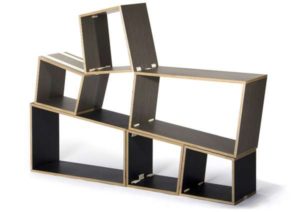 If you operate a small to mid-sized manufacturing enterprise (SME), how are you going to grow revenue and earnings? Every company relies on organic growth of their core products. For most that is typically not enough to sustain the business long term. Geographic expansion and acquisitions can help in some circumstances but long-term, a company must innovate or the business will stagnate and be eclipsed by competitive forces. This is especially true in today’s hyper-competitive environment (1).
If you operate a small to mid-sized manufacturing enterprise (SME), how are you going to grow revenue and earnings? Every company relies on organic growth of their core products. For most that is typically not enough to sustain the business long term. Geographic expansion and acquisitions can help in some circumstances but long-term, a company must innovate or the business will stagnate and be eclipsed by competitive forces. This is especially true in today’s hyper-competitive environment (1).
A small to mid-sized enterprise (SME) faces special challenges to improve its ability to innovate. Let’s consider some of these.
Many SME organizations are family owned. Research has shown that family participation in management tends to make the firm more risk-averse in considering the range of choices for new product development, but when they do invest in more risky projects are more effective at execution (2). Second, these businesses tend to take less risk in new product decisions if most of the family’s wealth is invested in the business. The opposite is also true (3).
For family owned firms, therefore, it is crucial that the owner(s) understand the bias in how they may approach decision making. If every project is low-risk, incremental improvements of existing products, there may never be the opportunity to change the company’s financial trajectory and develop new sources of revenue.
A second point relates to a conversation I had recently with the owner of a small business. This analytical instrument manufacturing company was struggling with pricing pressures, with the belief that they needed to improve their selling skills. That might be partially true, but does not tell the whole story.
All too often SME’s approach innovation as follows: a) develop a product based on their perception of what the customer wants or on a new technology in search of a customer need, b) decide how to price it based on margin requirements, and c) start selling. A more effective approach is to a) define the product considering the competitive landscape and customer needs, b) based on the definition, consider the cost, margin requirements and required average selling price, c) if the business case is acceptable, develop the product, d) start selling. Note that if the business case is not acceptable, then you must go back to the beginning of the process, not simply hope for the best. The point is that you have to consider the cost, margin and what customer’s will pay before you develop the product, not after. This is often ignored.
 Another common theme with SME’s is that the product line grows haphazardly. Customers might have a special request for a product. Rather than resist the temptation to do “specials”, the product is developed and rolled into the product line in the belief that other customers will value it. More often than not, this is a not the case. The product line becomes a collection of distinct products, all on different platforms with unique parts. There’s no overarching product line strategy. Organizational complexity increases as does costs due to inventory requirements and numerous distinct manufacturing processes.
Another common theme with SME’s is that the product line grows haphazardly. Customers might have a special request for a product. Rather than resist the temptation to do “specials”, the product is developed and rolled into the product line in the belief that other customers will value it. More often than not, this is a not the case. The product line becomes a collection of distinct products, all on different platforms with unique parts. There’s no overarching product line strategy. Organizational complexity increases as does costs due to inventory requirements and numerous distinct manufacturing processes.
What’s the solution to all of these challenges? A key aspect is having an innovation management process. There is strong resistance to process, however, in many small to mid-sized firms who consider themselves entrepreneurial. Reasons might include:
“We don’t have time for a process. We are too busy innovating and a process will slow us down.”
“Having a process is only necessary for large companies. An SME doesn’t need to worry about that.”
“Having a process implies bureaucracy typical of big companies. We need to be more flexible.”
While many of the reasons above seem rational, why might an SME consider implementing or enhancing their existing process?
 Survey data suggests companies with strong, coherent processes are more successful innovating over the long run compared to companies who ignore process. A recent survey conducted by Planview says it well: “Operationalizing innovation does not crush creativity; rather it can encourage more calculated risk taking with a strong set of checks and balances based on data (and some gut)” (4).
Survey data suggests companies with strong, coherent processes are more successful innovating over the long run compared to companies who ignore process. A recent survey conducted by Planview says it well: “Operationalizing innovation does not crush creativity; rather it can encourage more calculated risk taking with a strong set of checks and balances based on data (and some gut)” (4).
Second, as the company grows in revenue and headcount, the “project portfolio” will grow. As a start-up, or small company, you may very well only run one project at a time. When that project is done, and the product introduced to market, you start on the next project. Over time as the company grows, the need emerges to manage multiple projects simultaneously. An innovation management process helps alleviate the challenge of managing multiple projects.
A final reason for implementing an innovation management process is to improve decision making. In a small company, the original founder(s) typically make most every decision in the company. As the company grows, however, effective decision making has to be partially decentralized otherwise the entire decision making process will grind to a halt. Slow decision making is a common problem in many SME’s as well as large companies. An innovation management process helps solve that problem.
In summary, SME manufacturing firms face special challenges to innovate. A right-sized innovation management process can help make your innovation efforts effective and lead to long-term financial success.
Notes:
- See this article: 5 Keys to Innovation as a Strategic Choice for Business Growth.
- Matzler, Kurt et.al. 2015. The Impact of Family Ownership, Management, and Governance on Innovation. Journal of Product Innovation Management 32(3):349-360
- Sciascia, Salvatore et.al. 2015. Family Ownership and R&D Intensity in Small- and Medium-Sized Firms. Journal of Product Innovation Management 32(3):319-333
- Fourth Product Portfolio Management Benchmark Study. Commissioned by Planview and conducted by Appleseed Partners and OpenSky Research. 2013.
 Bio
Bio
Jeff Groh is President of New Product Visions (newproductvisions.com) located in Flat Rock, NC. New Product Visions helps companies drive revenue and earnings growth by improving their innovation management practices. We focus on processes, organization, management engagement and culture. Services include consulting, Innovation Coach™ Workshops (newproductvisions.com/workshops) and software enablers. Mr. Groh spent 30+ years in industry in a variety of management roles in sales, manufacturing and new product development prior to starting New Product Visions. He is particular passionate about the role of senior management and the culture that supports innovation success. For additional information or a no-cost on-line assessment of your company’s innovation management practices, email Jeff at jgroh@newproductvisions.com or by phone at (302)-367-3160. Available for select speaking engagements.


Be the first to comment on "Small to Mid-Sized Manufacturing Firms: Unique Innovation Challenges"